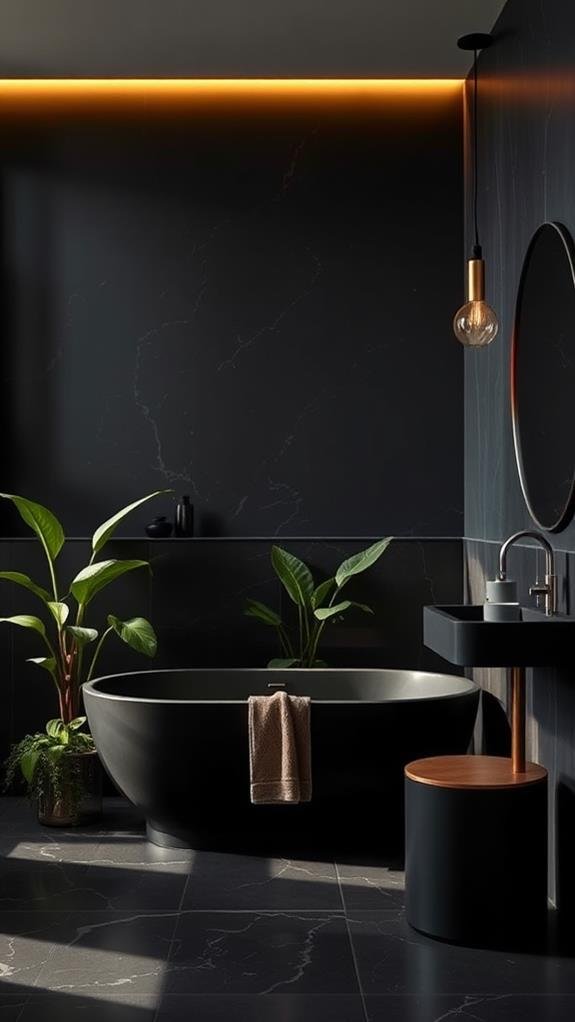Achieve Modern Colonial Interior Design in Your Home
To achieve a modern colonial interior design in your home, start by mixing traditional elements with contemporary styles. Use warm, earthy colors like deep reds or muted greens for a cozy vibe. Choose sturdy furniture, such as rich wood dining tables and comfortable sofas, to create inviting spaces. Add textures with cotton or wool throws and layered cushions. Pay attention to architectural details, like exposed beams and tall windows, to improve your home’s charm. Finally, incorporate thoughtful accessories for character while avoiding clutter. This balance will give you a stylish and timeless look that feels both classic and current, and there’s more to investigate!
Key Takeaways
- Select a warm, earthy color palette with rich hues and classic neutrals to create a cozy, inviting atmosphere.
- Incorporate sturdy, traditional furniture pieces made from rich woods to enhance functionality and comfort in gathering spaces.
- Utilize a mix of textures and fabrics, such as wool throws and cotton cushions, to add depth and coziness to your decor.
- Highlight architectural features like exposed beams and grand fireplaces to emphasize Colonial heritage while maintaining modern aesthetics.
- Accessorize thoughtfully with vintage items and balanced arrangements to enrich the space without overwhelming it.
Understanding Modern Colonial Style
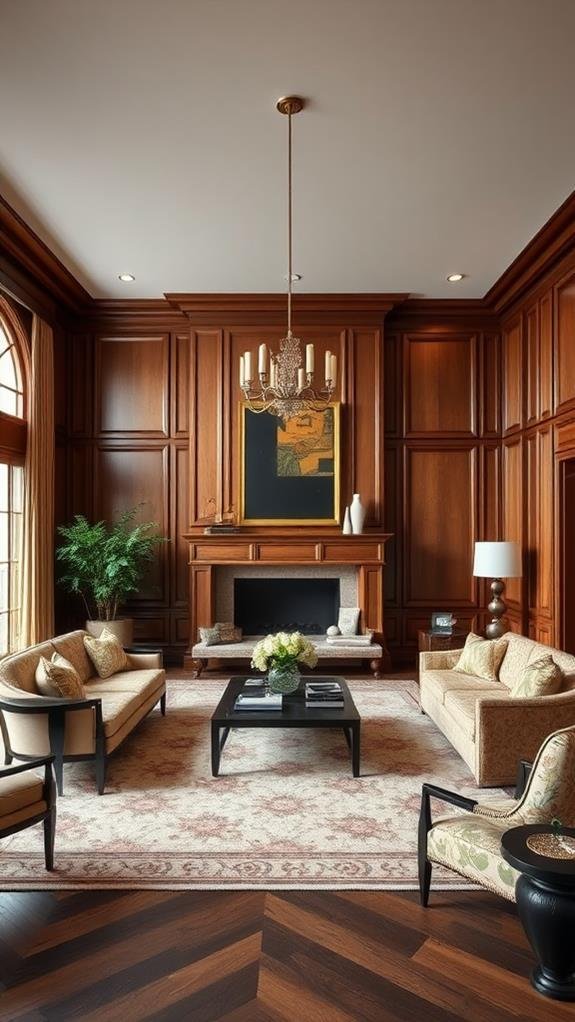
Modern Colonial style blends traditional colonial elements with contemporary aesthetics, creating a harmonious and inviting space. This design approach offers a balance that makes your home feel both classic and current.
You’ll notice that Modern Colonial often incorporates features like large windows, open layouts, and a warm color palette, which help to invite natural light and create a cozy atmosphere.
By mixing materials, such as wood and stone, this style adds depth and visual interest. You can also incorporate sleek furniture pieces alongside traditional accents to give your home a fresh yet timeless appeal.
Key Characteristics of Colonial Design
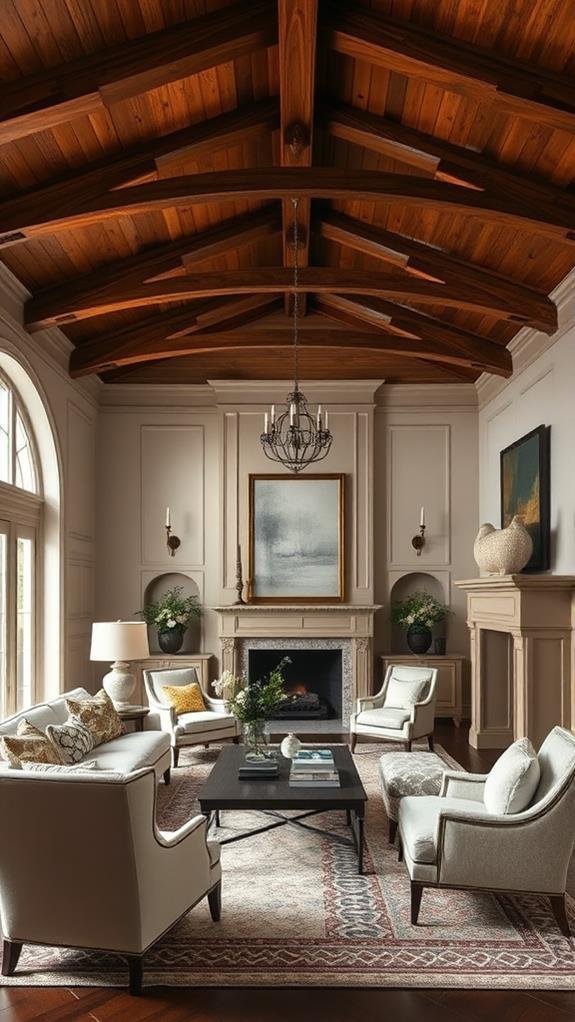
When exploring the essence of Colonial design, you’ll find that it’s rooted in tradition and functionality. This design style emphasizes symmetry, often featuring balanced layouts and classic architectural elements, like columns and gables.
You’ll notice rich wood tones, especially in furniture, which are sturdy and timeless. Fabrics play a significant role too—think muted, earthy colors and patterns like stripes or florals. Textiles often come from natural materials, enhancing the overall rustic feel.
Additionally, Colonial design incorporates handcrafted details, reflecting a time when craftsmanship was valued. You’ll typically see functional spaces arranged for family gatherings, blending comfort and purpose.
Choosing a Color Palette
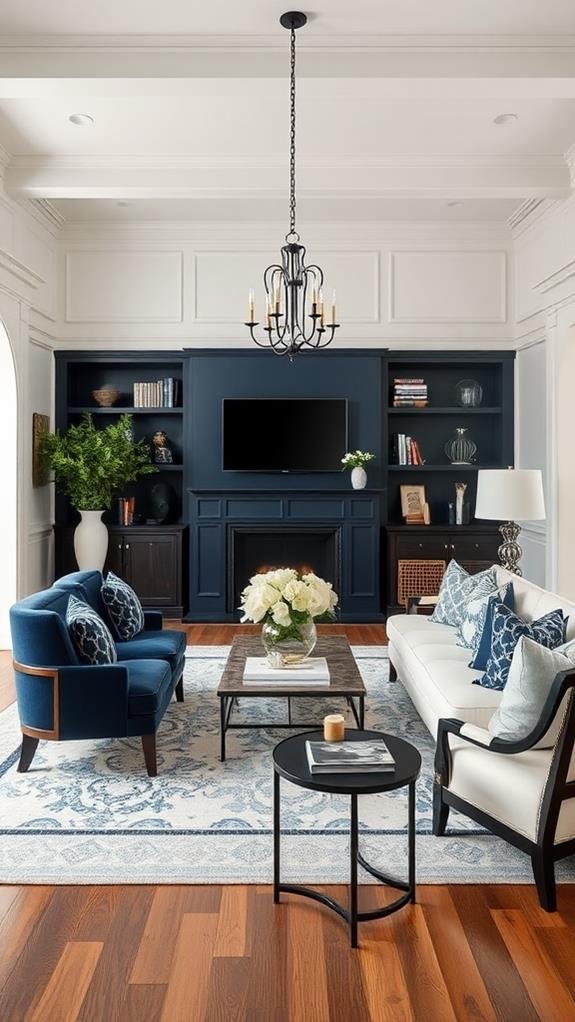
A well-chosen color palette can improve your Colonial-inspired space, creating a harmonious and inviting atmosphere.
To start, think about warm, earthy tones like deep reds, soft yellows, and muted greens. These shades reflect the natural materials Colonial homes often used.
You might also consider classic neutrals such as cream, beige, or taupe to provide a calming backdrop, allowing your textiles and décor to shine.
Don’t forget to add accents with richer hues, like navy or burgundy, to create depth and interest.
When you balance these colors throughout your rooms, it’ll help unify your design.
Essential Furniture Pieces
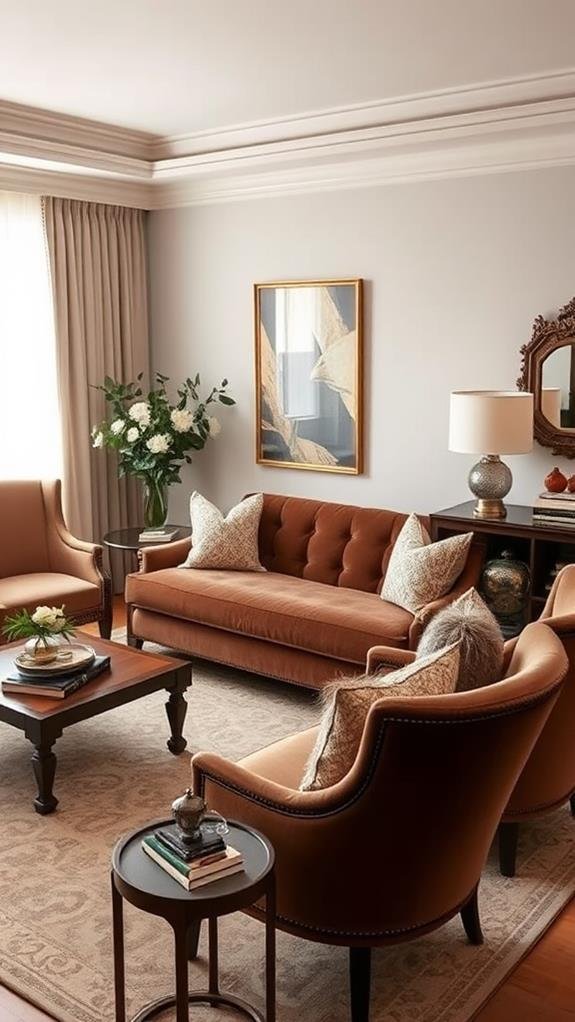
Comfort and functionality are key in creating a Colonial-inspired interior, and selecting essential furniture pieces plays an important role in achieving this balance.
Start with a sturdy dining table, often made from rich woods, where family and friends can gather.
Add comfortable chairs to encourage long conversations.
A classic sofa, featuring deep cushions and elegant lines, is perfect for lounging.
Include a wooden coffee table to hold books or drinks, enhancing both style and utility.
Don’t forget side tables for lamps or personal items.
Finally, consider a well-crafted bookshelf to display your favorite reads and treasures.
These pieces not only provide comfort but also bring a timeless elegance that embodies the Colonial style, making your home inviting and functional.
Incorporating Textures and Fabrics

To create a warm and inviting Colonial interior, embracing various textures and fabrics is essential.
Start with rich, natural materials like wool and cotton for your upholstery, which add comfort and warmth to your space.
Layer your furnishings with throws and cushions in different patterns, such as plaids or florals, to create visual interest.
Don’t forget about curtains—heavy drapes or light linen can improve the cozy feel while letting in natural light.
You can also use woven baskets to introduce more texture, providing stylish storage solutions.
Architectural Elements and Details
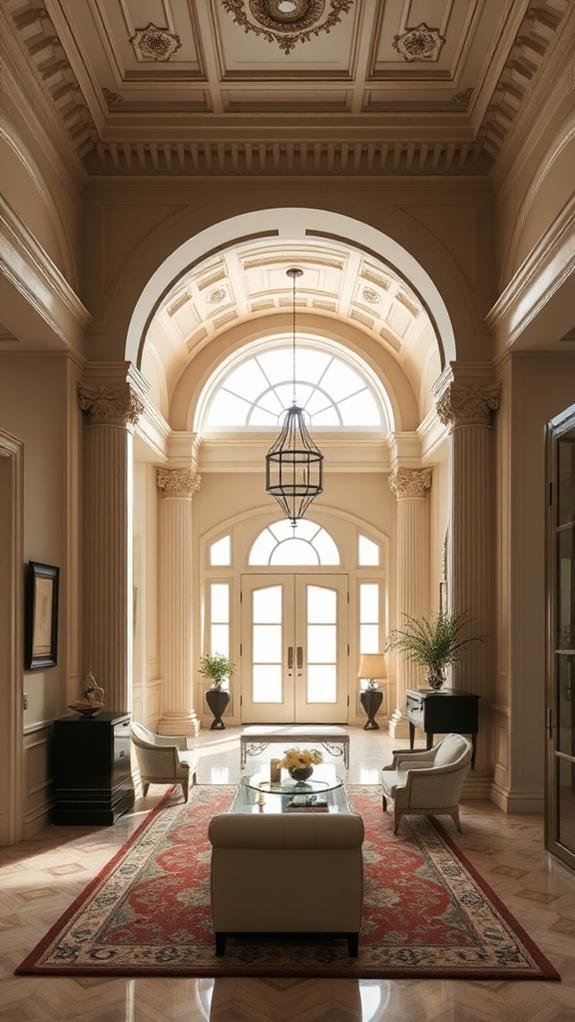
Incorporating textures and fabrics sets the foundation for a Colonial interior, but architectural elements truly define the space’s character.
Start by focusing on sturdy wood details, such as exposed beams and classic molding. These features give your home that distinct Colonial charm.
Don’t overlook windows; tall, multi-pane designs let in plenty of natural light while enhancing the historical feel.
Consider adding a grand fireplace, which serves as a cozy focal point in any room.
Also, think about doors with intricate paneling or even vintage hardware, as these small touches can make a big impact.
Lighting for Colonial Ambiance
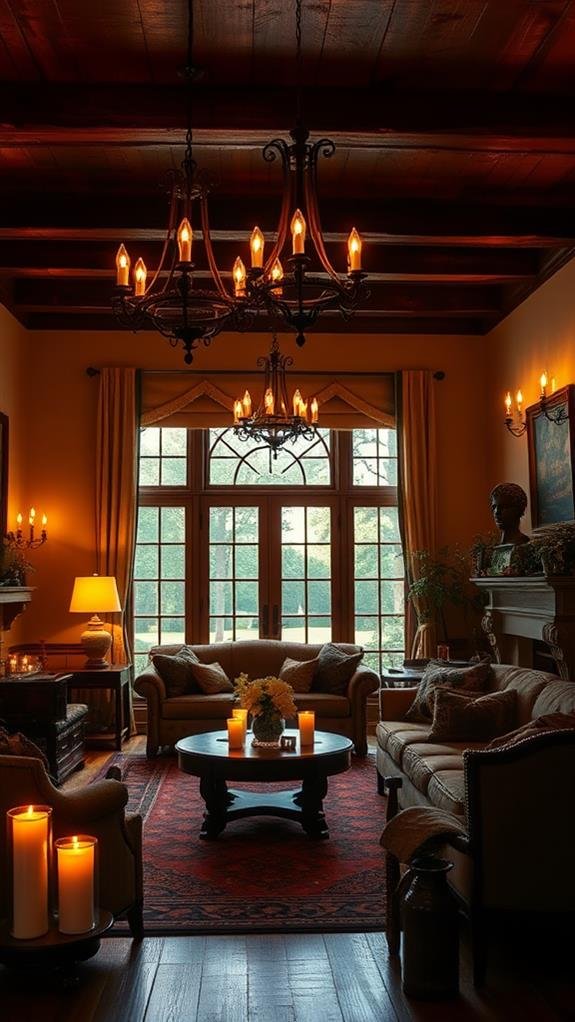
Creating the right lighting for a Colonial ambiance can transform your space and enhance its historic charm. Start with warm, soft white bulbs that mimic candlelight, enhancing the inviting feel.
Use elegant chandeliers or vintage-inspired pendant lights in key areas, such as your dining room and living spaces. Think about installing wall sconces to add depth and create a cozy atmosphere in hallways or along staircases.
Lantern-style fixtures can also capture that Colonial appeal, especially outdoors. Don’t forget table lamps with classic shades to brighten up side tables and reading nooks.
Accessorizing With Purpose
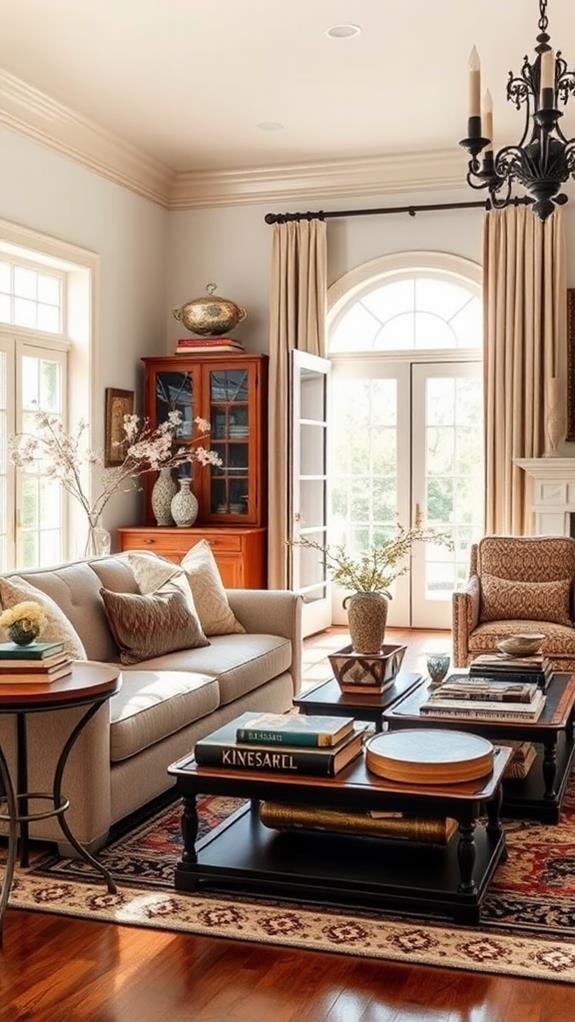
Accessorizing with purpose can improve your Colonial interior, seamlessly blending style and functionality.
Start by selecting key pieces that reflect the era’s charm, like vintage maps or antique globe decor. These items can serve as conversation starters while adding depth to your space.
Incorporate textiles, such as patterned throw pillows or woven baskets, to introduce warmth and texture.
Don’t forget about artwork; classic portraits or landscapes evoke a sense of history and sophistication.
When arranging your accessories, aim for balance. Group like items in odd numbers, and vary heights to create visual interest.
Remember, every piece should have a reason for being there, so choose thoughtfully.
With the right accessories, your Colonial interior will truly come alive!
Common Mistakes to Avoid
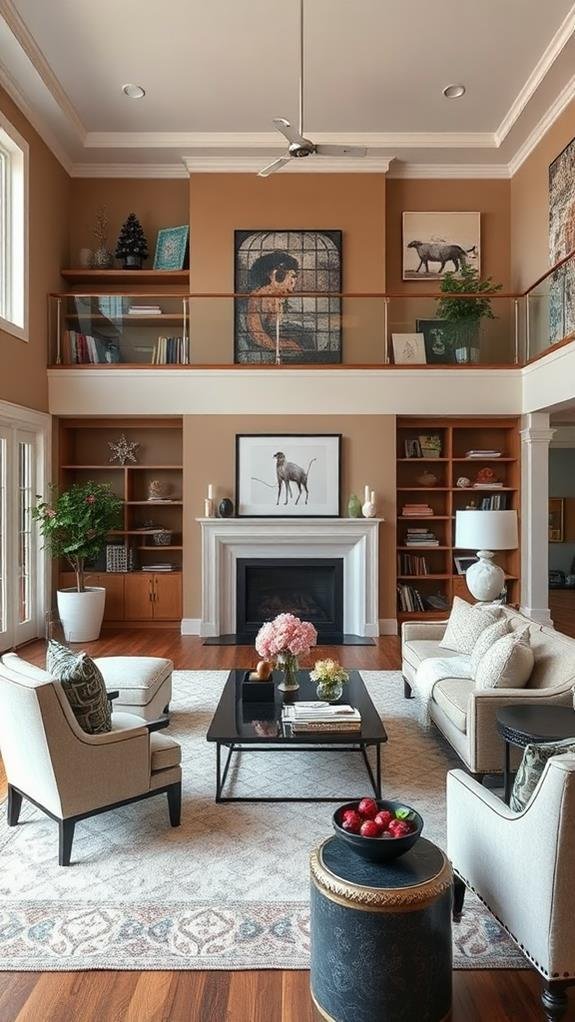
Elevating your Colonial interior design requires careful attention, especially to common pitfalls that can undermine your aesthetic vision.
One mistake you might make is choosing furniture that doesn’t match the theme—mixing ultra-modern pieces can disrupt harmony.
Also, over-accessorizing can clutter a space; it’s important to select a few standout items that highlight your style.
Ignoring scale is another misstep; oversized furniture can overwhelm a room, while too-small pieces may feel lost.
Finally, don’t forget about color; using too many bold hues can overshadow the classic Colonial palette.
Conclusion
By blending classic colonial elements with modern touches, you can create a stylish and inviting home that reflects your personality. Focus on key features like rich colors, timeless furniture, and varied textures to bring warmth and character to your space. Don’t forget to pay attention to lighting and architectural details—they’re essential for achieving that colonial charm. Finally, be mindful of common design mistakes, and you’ll transform your home into a cozy retreat with timeless elegance.

